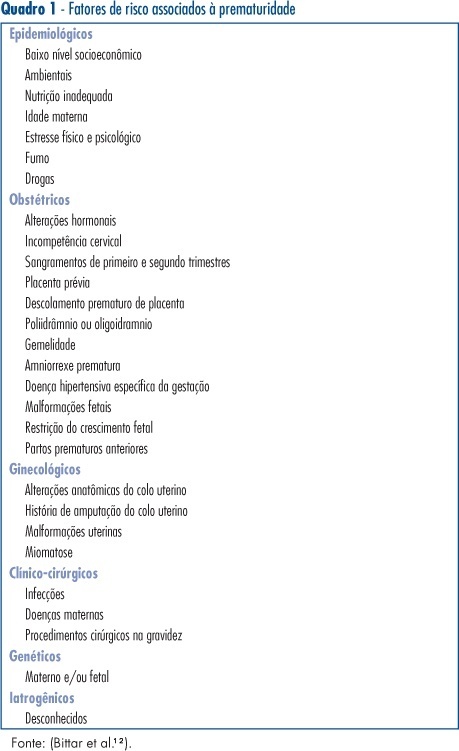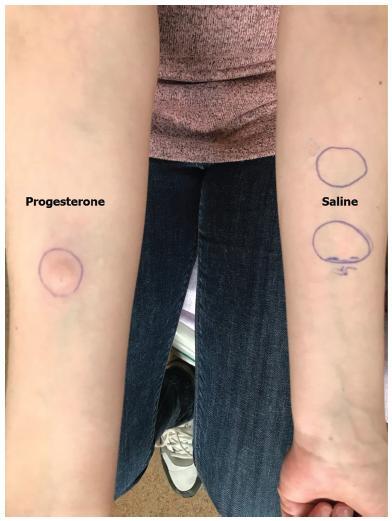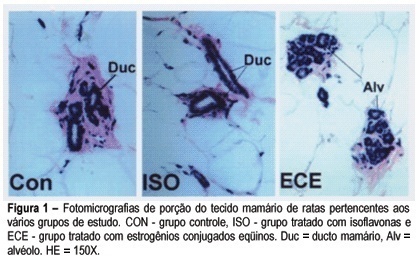Summary
Revista Brasileira de Ginecologia e Obstetrícia. 2018;40(4):203-208
To evaluate the prevalence of adherence to screening methods for breast and cervical cancer in patients attended at a university hospital and to investigate whether knowing someone with breast cancer, moreover belonging to the patient’s family, affects the adherence to the screening recommendations.
This was a cross-sectional and quantitative study. A structured interview was applied to a sample of 820 women, between 20 and 69 years old, who attended a university hospital in the city of Juiz de for a, MG, Brazil. For the analysis, the chi-square test was used to assess possible associations between the variables, and the significance level was set at p-value ≤ 0.05 for a confidence interval (CI) of 95%.
More than 95.0% of the sample performed mammography and cervical cytology exam; 62.9% reported knowing someone who has or had breast cancer, and this group was more likely to perform breast self-examination (64.9%; odds ratio [OR] 1.5; 95% CI 1.12-2.00), clinical breast examination (91.5%; OR 2.11; 95% CI 1.37-3.36), breast ultrasound (32.9%; OR 1.81, 95% CI 1.30-2.51), and to have had an appointment with a breast specialist (28.5%; OR 1.98, 95% CI 1.38-2.82).Women with family history of breast cancer showed higher propensity to perform breast self-examination (71.0%; OR 1.53 95% CI 1.04-2.26).
There was high adherence to the recommended screening practices; knowing someone with breast cancer might make women more sensitive to this issue as they were more likely to undergo methods which are not recommended for the screening of the general population, such as breast ultrasound and specialist consultation; family history is possibly an additional cause of concern.
Summary
Revista Brasileira de Ginecologia e Obstetrícia. 2009;31(4):203-209
DOI 10.1590/S0100-72032009000400008
Among the clinical factors for preterm birth, some confer substantial increased risk, including a history of preterm birth, multiple gestation and vaginal bleeding in the second trimester. However, these factors are present only in a minority of women who ultimately deliver preterm and thus have low sensitivity. Cervical dilatation, effacement and position as determined by manual examination have been related to an increased risk of preterm birth but also suffer from low sensitivity and positive predictive values. Cervical length measured with transvaginal ultrasound has also been related to an increased risk of preterm birth as cervical length decreases. The reported sensitivity is better than other tests, but positive predictive value is low. The principal utility of the fetal fibronectin assay lies in its negative predictive value in symptomatic women. Increased sensitivity has been reported when cervical length is used in combination with fetal fibronectin.

Summary
Summary
Revista Brasileira de Ginecologia e Obstetrícia. 2019;41(3):203-205
Autoimmune progesterone dermatitis (APD) is a rare autoimmune dermatosis characterized by recurrent cutaneous and mucosal lesions during the luteal phase of the menstrual cycle that disappear some days after the menses.
Report A 34-year-old primipara woman with no significant past medical history and no prior exogenous hormone use, who presented with cyclic skin eruptions starting 1 year after the delivery. The lesions occurred 6 days before the menses and disappeared in between 1 and 2 days after the menstruation ceased. The patient was diagnosed after a positive response to an intradermal test with progesterone and was successfully treated with combined oral contraceptives. The skin eruptions have not returned since the initiation of this therapy.
Dermatologists, gynecologists, and obstetricians should be aware of this rare entity. Furthermore, if this condition is suspected, a thorough history taking on the menstrual cycle and results of the intradermal progesterone test are mandatory.

Summary
Revista Brasileira de Ginecologia e Obstetrícia. 2005;27(4):204-209
DOI 10.1590/S0100-72032005000400007
PURPOSE: to analyze the effects of isoflavones and estrogens on the morphology, morphometry and VEGF expression of the adult female rat mammary gland. METHODS: Forty-five adult female rats were oophorectomized; 28 days after surgery they were divided into 3 groups of 15 animals each: CON - control (treated with propylenoglycol); ISO - isoflavones (100 mg/kg) and CEE - conjugated equine estrogens (50 µg/Kg). Drugs or vehicle were given orally once a day for 60 days. After this, the animals were killed and the first pair of inguinal mammary glands was immediately removed; part of the material was processed for routine histological study and the remaining tissue was frozen for further analyses of the expression of VEGF mRNA by means of the RT-PCR technique. RESULTS: We observed that mammary ducts were atrophic in the control (CON) and isoflavone-treated (ISO) groups. In these groups the mammary glands were composed of a large concentration of adipose tissue with some ducts and rare alveolar structures. In the CEE group the ducts were well developed with many buds and alveolar structures. The number of mammary gland alveoli was higher in CEE than in the other groups (CON = 1.4 ± 2.1; ISO = 1.6 ± 3.8; CEE = 12.3 ± 7.1 alveoli/mm²; p<0.05%); also, the cell volume was higher (CON = 14.9 ± 4.9; ISO = 11.4 ± 6.9; CEE = 27.4 ± 9.7 µm³, p< 0.05%). The same was observed with regard to the number of blood vessels (CON = 16.4 ± 1.5; ISO = 18.4 ± 2.1; CEE = 37.1 ± 4.1 vessels/mm², p< 0.05). The expression of VEGF in the CEE group was higher than in the other groups, which did not significantly differ from each other in this respect. CONCLUSION: Our data did not show any proliferation effect in the mammary tissue of adult oophorectomized rats treated with isoflavones (100 mg/kg) during 60 days.

Summary
Revista Brasileira de Ginecologia e Obstetrícia. 2007;29(4):205-210
DOI 10.1590/S0100-72032007000400007
PURPOSE: to evaluate the experience of an assisted reproduction center that uses depot administration of half-dose of GnRH agonist for pituitary suppression in assisted reproductive cycles. METHODS: prospective study that evaluated in vitro fertilization or intracytoplasmatic sperm injection (IVF/ICSI) cycles utilizing half-dose of leuprolide acetate between August 2005 and March 2006. Recombinant FSH was administered for controlled ovarian induction based on the protocol. hCG was administered when at least one follicle reached 19 mm in diameter. IVF or ICSI was performed according to infertility factor. Up to four embryos were transferred on the second or third day after oocyte retrieval. Progesterone supplementation was initiated on the same day of oocyte retrieval, and after 14 days beta-hCG was measured. The following parameters were evaluated: number of aspirated cycles, cancelled cycles, transferred cycles, total dose of FSH employed, number of mature oocytes retrieved, fertilization rate, number of transferred embryos, embryo implantation rate, and pregnancy rate. RESULTS: A hundred and nine IVF/ICSI cycles were initiated. The mean age of the patients was 34.9 years. We observed 1.8% of cancellation rate. The mean total dose of gonadotrophins employed was 1,905 IU per cycle. We obtained 86.5% of mature oocytes and the fertilization rate was 76.3%. The mean number of embryos transferred was 2.7. Pregnancy rates per aspiration and per transfer were 25.2 and 25.7%, respectively. Of those who reached pregnancy, 26.3% were twins and 5.3% were triplets. CONCLUSIONS: the half-dose of GnRH depot employed for pituitary suppression was a useful alternative for ovarian stimulation in IVF cycles because it is comfortable and practical for the patient, besides its low cost.
Summary
Revista Brasileira de Ginecologia e Obstetrícia. 2006;28(3):205-205
Summary
Revista Brasileira de Ginecologia e Obstetrícia. 2006;28(3):205-205